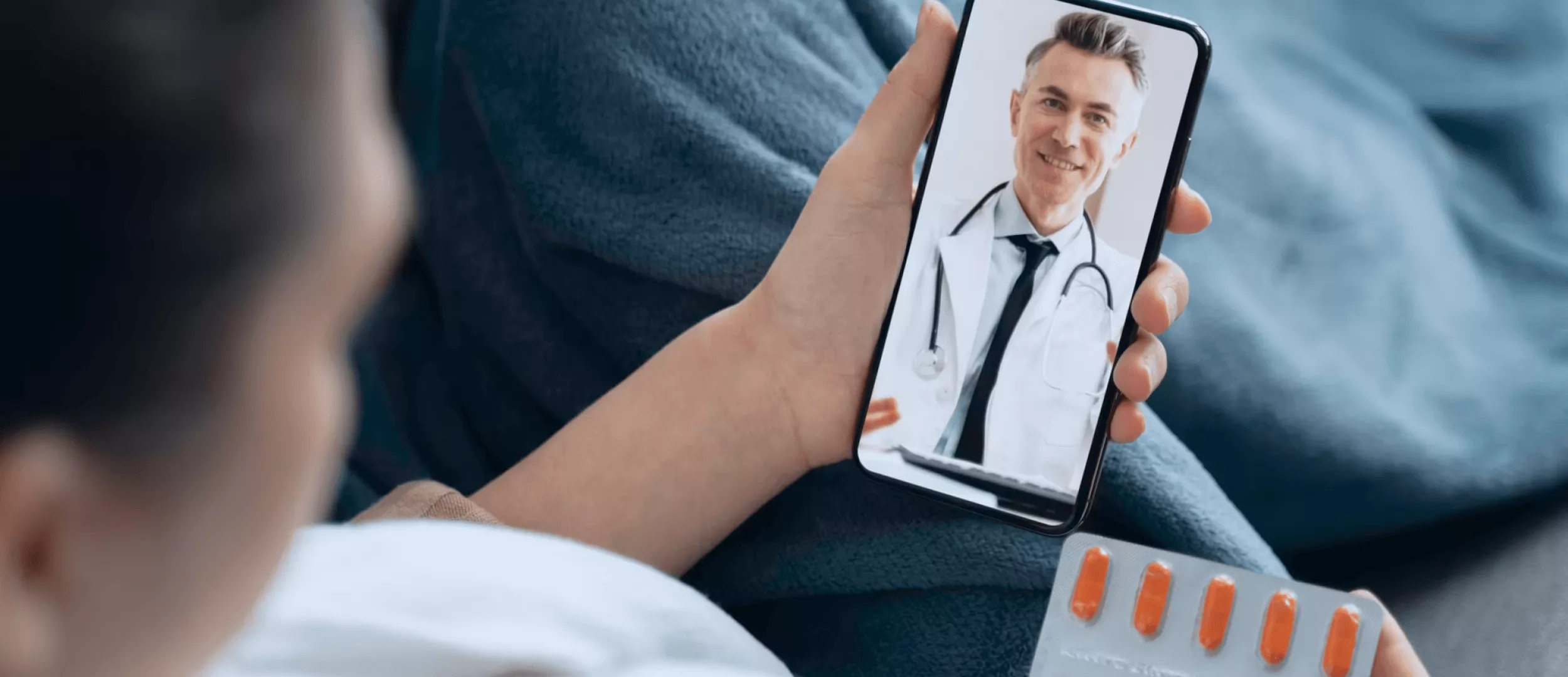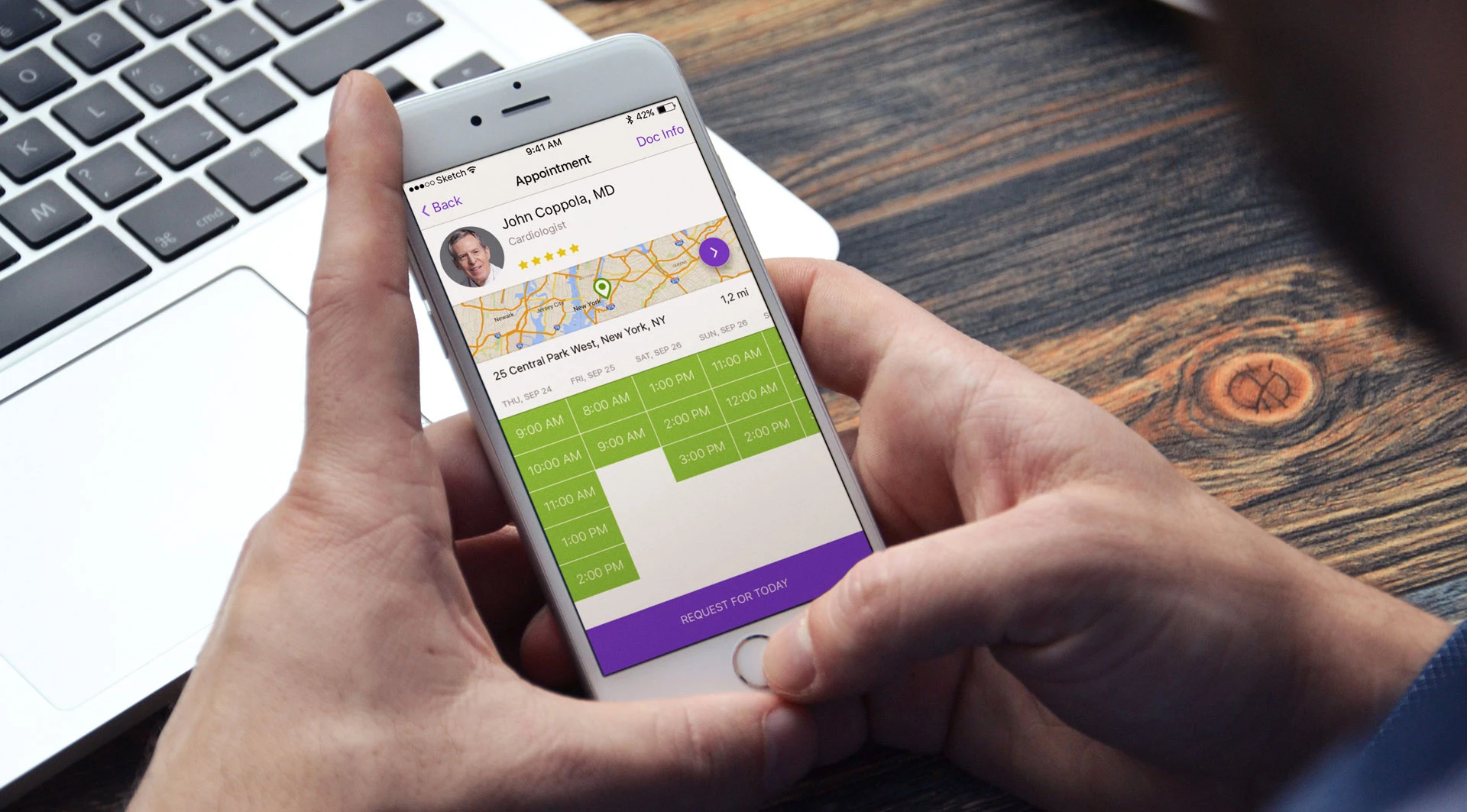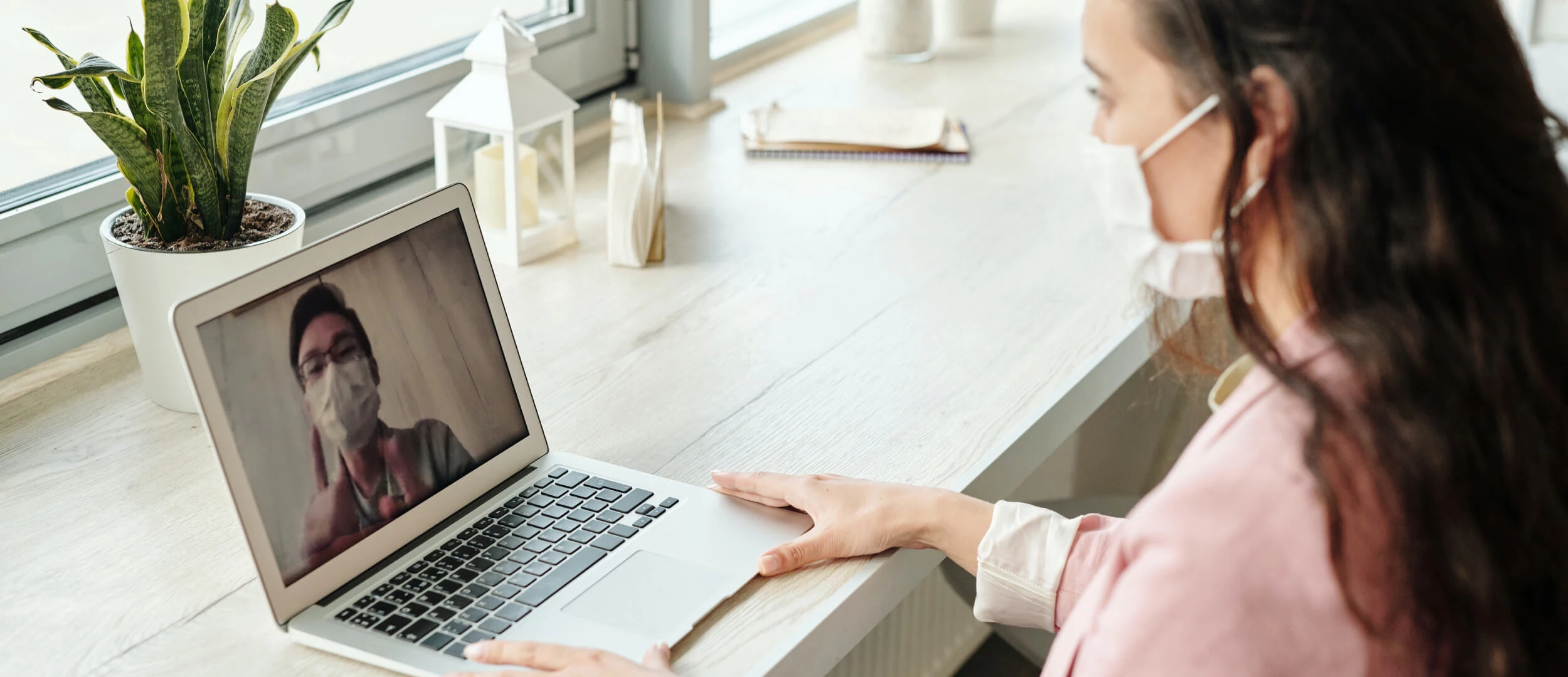
Both patients and providers of healthcare are showing a strong preference for telehealth solutions, which is driving the demand for telehealth app development. The global telemedicine market is currently experiencing rapid growth at a CAGR of 25.9%, and it's projected to reach $431,823.81 million by 2023. Telehealth software development is a highly promising investment, considering the substantial shift of the healthcare industry towards online platforms.
This blog post delves into the process of creating a telemedicine app, offering valuable insights and guidance from Stfalcon. Drawing from our extensive experience in executing multiple telehealth projects, we are eager to share our expertise and provide assistance with your development endeavors.
Statistics Data for Telehealth Apps
The remarkable 38X surge in telehealth usage since late 2020 underscores the pivotal role played by custom telemedicine software within the healthcare industry. Innovative apps like Teladoc, AmWell, Doctor on Demand, MDLive, and Healthily have transformed healthcare services by transitioning them into the digital realm.
Telemedicine software adoption is not only driven by patients' increasing willingness to use telehealth apps but also by governmental initiatives. Recent regulatory changes have created a more conducive environment for those involved in developing and implementing telehealth solutions.
These global trends have contributed to the rapid growth of telemedicine development, adoption, and widespread popularity:
The demand for telehealth software is expected to experience a Compound Annual Growth Rate (CAGR) of 15.4% from 2022 to 2030, surpassing the 13.8% CAGR observed during 2015-2021.
According to a report from Fortune Business Insights, the Telehealth Market is expected to exhibit substantial growth, expanding from USD 142.96 billion in 2023 to reach USD 504.24 billion by 2030. This growth trajectory signifies a robust Compound Annual Growth Rate (CAGR) of 19.7% over the forecast period.
According to data as of March 2021, over 61% of Americans reported having used telehealth appointments. This represents a substantial rise compared to March 2020 when less than 20% had experienced telehealth visits.
Approximately 68% of surveyed Americans experimented with telemedicine because their physicians transitioned in-person appointments to online platforms. Additionally, 28% cited the convenience of telehealth as a choice for immediate care.
Impressively, more than 93% of physicians anticipate using telehealth solutions in the future, demonstrating a strong commitment to this transformative healthcare approach.
These statistics underscore the profound impact of telemedicine mobile app development. Even with the end of the pandemic on the horizon, the expansion of telemedicine shows no signs of abating. The virtual care trend is poised to endure for decades, fundamentally altering the landscape of healthcare service delivery.
Want a web app that does more?
Let's build a solution that's smart, sleek, and powerful.
Alina
Client Manager

How do telemedicine apps function?
Telemedicine enables providers of healthcare to deliver care to patients whenever necessary, irrespective of their location, using a computer or smartphone equipped with a camera, microphone, and specialized software. The typical workflow for an online consultation may encompass the following steps:
- Patient Login: To initiate a consultation, the patient logs into the system, either through their existing account or by creating a new one. They specify their symptoms, select the relevant specialist, and choose the desired services.
- Appointment Booking: After identifying a suitable healthcare provider, the patient schedules an appointment, typically a video call, using the platform's integrated calendar.
- Visit Confirmation: Both the doctor and patient receive confirmation of the scheduled visit. They then convene for the appointed virtual session.
- Medical History and Consultation: During the online consultation, the doctor reviews the patient's medical history, discusses their symptoms, and may prescribe treatment or recommend laboratory tests.
- Online Payment: Following the consultation, the patient completes the payment process using the integrated payment gateway. They receive receipts detailing prescribed medications and the doctor's recommendations.
This seamless process enables remote healthcare delivery and enhances access to medical services.
Creating Your Own Blueprint for Designing and Developing a Telemedicine App
When embarking on the development journey of a telemedicine app, it's essential to consider that the user experience (UX) will consist of at least two distinct dashboards: one for patients and another for doctors. While it's possible to include additional dashboards for administrators and technicians later, it's advisable to focus on these two primary user roles initially.
As you start developing the beta version of your app, prioritize defining the features for your Minimum Viable Product (MVP) and launching it. The feedback gathered from the beta version will inform subsequent feature additions, dashboards, and plugins, allowing your telemedicine app to evolve based on user preferences and needs.
Let's delve into the specifics of outlining the app's features for different stakeholders:
App Features for Patients:
Begin the design process with the following core features presented as clickable buttons:
Register/Login Page
Create a straightforward interface for new patients to register or log in to their accounts. Ensure that the registration module is integrated into the backend, enabling doctors and administrators to access patient information.
Account Profile
Enable patients to provide personal information such as full name, phone number, residential address, and email ID. While information input occurs only once, patients should have the ability to edit their details when necessary. Save patient data for use by doctors and other stakeholders in generating reports and building case histories.
Schedule Online Appointments
Place this tab prominently within your telemedicine app, as it's essential for booking appointments. When patients select this feature, redirects them to an interface where they can browse doctors' profiles and book appointments based on availability.
Virtual Visit
Facilitate video or audio calls between patients and doctors for medical consultations with this feature. Include a live chat option alongside the video call, allowing patients to upload old prescriptions or relevant documents as needed.
Live Chat Interface
Offer patients and doctors a real-time chat interface for non-urgent communication outside of video calls. Ensure that this interface connects users to other stakeholders, including administrative staff, and provides a "call" button for easy access.
Upload Previous Medical Records
This feature can be integrated into the account profile page or presented separately, depending on your app's layout. Patients should be able to upload comprehensive medical records, including past and current prescriptions.
Alerts/Notifications
Include a notification bell icon to send patients reminders and notifications about upcoming, canceled, or rescheduled appointments.
Payment Processing
Integrate your app with a secure payment gateway, allowing patients to make electronic payments for virtual appointments. Provide detailed receipts outlining prescribed medications and doctor recommendations after each session.
Chatbot
Incorporate a chatbot that can respond to non-urgent queries, such as inquiries about clinic hours or consultation fees, offering patients instant responses.
App Features for Doctors
When developing the doctor's dashboard for your telemedicine app, ensure that it includes the following essential features:
Register/Login Page
Provide doctors with a user-friendly register/login interface similar to that of patients.
Account Profile
Allow doctors to fill in personal details and professional information, including credentials, specializations, and affiliations with hospitals. Patients should access this information when booking appointments.
Scheduling Manager
Empower doctors to manage their appointments efficiently. This feature should enable them to accept, reject, reschedule, or cancel virtual appointments with patients.
View Virtual Medical Records
Doctors must access prospective patients' medical records and lab reports before and during virtual consultations. This feature is crucial for providing informed care.
Session Recording
Offer doctors the ability to record consultation sessions for future reference and to create detailed treatment plans.
Live Chat with Call Button
Facilitate real-time communication between doctors and patients via a live chat interface during and after virtual calls. Include a call button for direct doctor-patient calls.
Payments and Billing
Integrate a billing system that allows doctors to generate bills and receive payments directly to their linked accounts within the app. Provide a breakdown of consultation fees, especially if your app charges a percentage per consultation.
Notifications Tab
Implement a notifications tab to remind doctors of upcoming appointments shortly before they commence and to notify them of received payments.
Administrative Dashboard:
Your administrative dashboard will primarily focus on user data management, including:
- Patient Records: Maintain records and consultation reports for all patients.
- Billing Details: Handle billing information and track payment histories.
- Appointment Management: Manage both past and upcoming appointments.
- User Data: Administer user data, ensuring privacy and security.
As your app gains more subscribers, consider designing a dedicated admin dashboard for tasks like connecting with different labs for prescribed tests. This strategic approach ensures your telemedicine app's scalability and usability while catering to the evolving needs of patients and healthcare professionals.
Telemedicine Software Development Benefits
Telemedicine software development yields numerous advantages for patients, doctors, and providers of healthcare, contributing to the transformation of healthcare services. Here's a breakdown of the expected benefits for each group:
Benefits for Healthcare Providers:
According to McKinsey's research, virtual urgent care solutions have the potential to replace approximately 20% of emergency room visits, 24% of healthcare office visits, and 35% of regular home health attendant services. This transition could result in substantial cost savings, estimated at around $250 billion in healthcare spending.
Telehealth apps optimize operational costs and enhance the efficiency of medical teams, promoting seamless collaboration among healthcare professionals.
Benefits for Patients:
- Telemedicine systems significantly improve accessibility and convenience for patients. They can receive medical care without the need to travel to a healthcare facility or endure lengthy waiting times in a hospital lobby.
- Patients, regardless of their location, can access consultations with specialist physicians, overcoming geographical barriers and ensuring access to quality healthcare services. This extends healthcare availability worldwide.
- Telehealth services tend to be more cost-effective than traditional in-person visits, making healthcare more affordable for patients.
Benefits for Doctors:
- Telemedicine software streamlines administrative tasks, reducing the burden of manual data entry. Remote patient monitoring and data collection are automated, allowing physicians to focus more on patient care.
- Doctors can easily communicate with patients through telemedicine apps, enabling quick consultations and follow-ups. This approach ensures that in-person visits are reserved for cases requiring physical examination, enhancing overall efficiency.
- Improved efficiency enables clinicians to attend to a larger patient population in less time, ultimately enhancing their performance and patient care.
These benefits collectively underscore the transformative impact of software for telemedicine development on the healthcare industry, benefiting all stakeholders involved.
Our Experience
HospApp
Our client sought to develop a novel mobile system designed to facilitate seamless communication among employees within patient-specific groups. This system enables individual interactions, file sharing, prescription management, and task assignments, all centered around a particular patient. Importantly, the patient's information is rigorously secured within the confines of the hospital, preventing any unauthorized external access.
The primary objectives of this system include:
- Reducing Patient Wait Times: The system aims to streamline patient services, significantly diminishing wait times, and enhancing overall service quality.
- Rapid Response to Emergencies: By facilitating quick communication and coordination, the system contributes to swifter responses to medical emergencies, thereby minimizing risks to patients.
- Automation of Documentation and Workflow: The system automates various documentation, interactions, and management processes for hospital staff, increasing efficiency and ensuring meticulous control.
- User-Friendly Interface: The system boasts a user-friendly, messenger-like interface. This approach ensures that the application is accessible and straightforward for individuals experienced with messaging apps, promoting ease of use among all staff members.
By accomplishing these objectives, the mobile system provides a valuable tool for healthcare professionals, improving patient care, efficiency, and overall hospital operations.
IsDocIn
The project's objective was to develop a mobile application for a service aimed at assisting individuals in scheduling appointments with telemedicine software providers. Within this framework, doctors are empowered to establish their profiles and receive notifications whenever an appointment is booked with them.
Our contributions encompassed the following:
- Patient-Centric Mobile UI: We crafted an intuitive user interface for the mobile application, catering to the needs and preferences of patients.
- Cross-Platform Compatibility: We meticulously designed versions of the application tailored for both iOS and Android operating systems.
- Native Application Development: Building upon our design, we proceeded to create native mobile applications, ensuring seamless and optimized performance on each respective platform.
This undertaking successfully culminated in the delivery of a versatile mobile application that simplifies appointment scheduling for users while offering doctors an efficient means of managing their appointments.
Bottom Line
Telemedicine stands as the leading domain in the realm of healthcare software development, experiencing a remarkable surge in growth. This surge can be attributed to the collective interest of patients, physicians, healthcare institutions, and governmental bodies in the adoption of telehealth solutions. Consequently, embarking on a telehealth app development venture holds substantial promise for success. Nevertheless, it is crucial to remain mindful of the inevitable challenges that accompany this endeavor, such as regulatory compliance, software interoperability, and the imperative of reliability. In the event that you require technical guidance or consulting services, Stfalcon’s dedicated team stands ready to extend its assistance and expertise in creating the best telemedicine apps, just contact us, free consultation is available.

 Read the full case study
Read the full case study
 Read the full case study
Read the full case study


